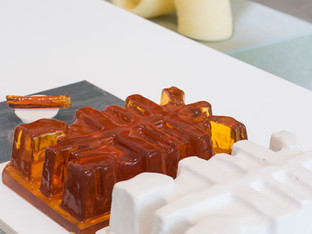Arquitecturas terminales

Arquitecturas terminales, 2020/2021
Látex, jabón de glicerina, cera de abeja, cera vegetal, parafina, foam, silicona, colofonia, escayola.


















Los cuerpos se mueven. Las ciudades respiran. Los individuos circulan. La ciudad muda de piel. Plantear una investigación sobre el cuerpo en la sociedad postcapitalista pasa por insertarlo en un circuito de flujos, por pensarlo como una máquina por la cual circulan una serie de excedentes materiales y afectivos que de la misma manera que discurren por nuestras arterias y órganos, desaguan por los canales y conductos por los que nuestros residuos transitan.
Arquitecturas terminales. Jesús Alcaide
COPIA. LÁTEX. Te imagino como un elemento constructivo. De dimensión estandarizada de entre un metro y medio y dos metros de largo (o longitud del tubo boca-ano). Tu entrada se acopla a la boca del grifo; tu salida, al sifón del WC. Miles de dispositivos como tú forman parte de esta red que comienza en un arroyo y desemboca, sin terminar, en el océano Atlántico. Dentro de ti pasa el agua límpida que bajó al embalse, se condujo por el canal, subió clorada al depósito y circuló bajo el asfalto hasta que ascendió para salir a presión por una tubería de cobre cuando accionaste la llave, mientras besabas con tus labios el grifo al beber a morro. Tú eres un cíborg conectado a una red descomunal de conductos que urbanizan lo que hay más allá de la ciudad. Eres un Frankenstein descompensado del tamaño de Gaia, lo que expulsaste ya lo bebiste y forma parte de las moléculas que te componen y con las que has intervenido el mundo.
Huecos de materiales huecos. Paula G. Masedo
Proyecto financiado por Ayudas Creación INJUVE y Fundación Arranz-Bravo